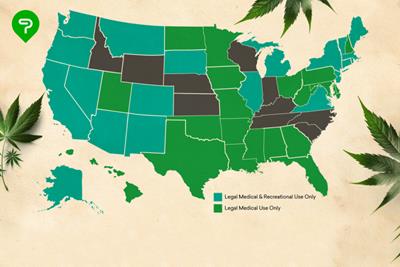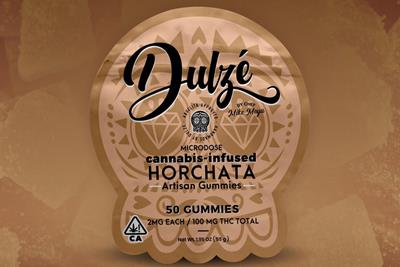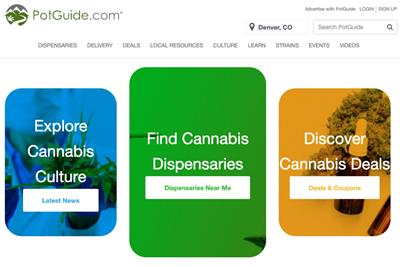
Monday October 10, 2016
 News
News
To reduce the chance of regret, many states have decided to take a “wait and see” approach to cannabis reform. Concerned with things like increased illegal activity, youth exposure and other public safety hazards, many states (and voters therein) think it best to the study the impact of legalization before jumping head-first into such an endeavor. And while this cautious approach seems reasonable on the surface, the deeper issue is the reliability of some recent “findings” which have many anti-reformers screaming “I told you so!”
Misleading Information from Seemingly Reliable Sources
The Rocky Mountain High Intensity Drug Trafficking Area, or RMHIDTA, recently released a report outlining the impact of marijuana legalization in the area. This government-funded publication, directed by spokesperson for the “No on 64” campaign, Tom Gorman, has been referenced many times by popular news sources including both CNN and Fox 21 News and claims things like an increase in youth exposure, road fatalities and alcohol consumption in states with legal cannabis. Pulling from data released by the National Survey on Drug Use and Health (pdf), this report claims to show definitive proof that cannabis legalization was a bad idea (even though the majority of the public feels otherwise), making it very difficult for voters to pick a stance on the issue.
But, then again, maybe that’s the point.
With all of the research coming out showing marijuana is less dangerous than alcohol, alcohol companies risk profit loss if marijuana reform continues. Such is also the case with prescription drug companies, private prisons and manufacturers of items that could be replaced by hemp. In order to protect their best interests, these industries use lobbyists to block marijuana reform and they use deceptive “reports” such as these to help make it happen.
What the Data Actually Shows
The RMHIDTA report, “The Legalization of Marijuana in Colorado; The Impact (pdf)”, claims there’s been a substantial increase of cannabis exposure in minors over the last few years. Referencing data gathered by the federal Substance Abuse and Mental Health Services Administration (SAMHSA), the report states that there was a 169% increase in cannabis exposure for 0 through 5-year-old children and a 112% increase among children ages 6 through 17.
What the report does not mention, however, are how small those numbers actually are. Specifically, cannabis exposure by children ages 0 through 5 increased by only 22 children and exposure by children ages 6 through 17 increased by only 28 cases – but, because the numbers of actual child exposure are so low to begin with (35 and 53 respectively over a two-year period), describing them in terms of percentages can make them seem pretty intimidating, perhaps needlessly so.
For perspective, consider that accidental child poisoning via laundry pods increased by 17% between 2013 and 2014 and currently stands at more than 22,000 cases of potentially fatal childhood poisonings per year. That’s more than 3,500 new cases of laundry pod poisoning every year! Kind of makes the 50-kid increase in youth pot exposure seem pretty minor.
Another misleading claim made by the RMHIDTA report states that there’s been a 67% increase in road fatalities involving cannabis though it neglects to mention that hospitals test for THC metabolites (which can stay in the body for 30 days or more), but not THC (the psychoactive chemical in cannabis) which pretty much renders this information obsolete. Hospitals do not measure intoxication, only whether or not cannabis has been consumed within the last month or so. We already know that legal weed entices more to try it; that comes with the territory of legalization. According to the Colorado Department of Transportation, road fatalities have actually been decreasing since 2002 despite an increased number of people in the state.

Other claims made in the report include an increased rate of alcohol consumption (though it neglects to account for the increased residency and tourism rate) and an increase in youth consumption in some areas. The problem with this is that the report insinuates an uptick in cannabis usage among teens but only references very specific regions within the state. When looking at youth cannabis consumption at a state-wide level, the variance is negligible. In fact, numerous reports including SAMHSA’s national survey and Colorado’s Healthy Kids survey (pdf) show that teen marijuana use is currently stable and down since 2009.
Misinformation is a Huge Problem
With all eyes on us as we help pave the way toward nationwide marijuana reform, it is pertinent that the information we gather be accurately presented. When percentages are being referenced instead of raw numbers (especially with a movement so young), it can be easy to manipulate people into believing something even if it’s not true. Unfortunately, this carefully-worded misinformation is damaging the movement and the people who would benefit from reform in ways such as job growth, increased quality of life and a reduced ecological footprint.
How to Determine the Credibility of Your Sources
Determining source credibility can be tricky, especially when the sources are seemingly reliable, as is the case with the RMHIDTA report and popular media sources which reference it. To help distinguish actual data from anti-pot propaganda, we encourage you to think critically about any information you take in. consider who the source is, what their position is on the issue and if there are any preconceived biases about the issue. Also, consider whether the source has anything to gain or lose as a result of their position? The RMHIDTA report is a great example of how important this is.
Marijuana legalization is a pretty big deal, in a society in which we’ve been spoon-fed anti-marijuana propaganda for decades, it makes sense to go into legalization state by state so we can study the impact of the move instead of throwing the whole country into the uncharted territory at once. When voters are sold misinformation about cannabis reform, we no longer have the ability to make educated decisions about our best interests. Instead of feeding the fear of cannabis reform, we must seek out the truth – and share it proudly whenever we can.
Photo Credit: rmhidta.org







